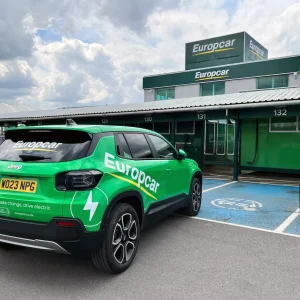
Used car market growth seen in the first half of 2024 is unlikely to continue during the rest of the year, according to Cox Automotive.
The data company said its latest market forecast was showing a slight slowdown in Q3 and Q4 compared with its previous prediction, as multiple factors combine to temper wholesale supply and consumer demand.
However, its full-year prediction of 7,434,709 sales is 1.2% up from its previous forecast, and would represent a 2.7% year-on-year increase.
Cox Automotive insight director Philip Nothard said the revised forecast, published in the company’s latest Insight Quarterly report, reflected a strong start to the year and expected influences on the market in the months ahead.
He said: “Despite subdued retail demand, margin pressures, and ongoing constraints in prime three-year-old retail stock, the used market showed remarkable resilience during H1. In fact, the total number of transactions in Q1 and Q2 was within a whisker of our upside forecast for H1 and 3.5% ahead of our more conservative baseline forecast.
“We caution against assuming this trajectory will continue, however. The second half of the year will likely see volume cool due to tightening supply into the market, heightening price competition in the new car space, and continued low consumer confidence.
“Our baseline forecast for the full year, therefore, remains the likely scenario.”
Challenges ahead
Nothard said several factors would affect the market during the rest of this year and into 2025, including fast-moving dynamics in the new market, limited availability of in-demand ICE variants, volatile EV values, and consumer appetite for rising prices.
“When looking at the used market, we must always have one eye on the new, which is experiencing significant volatility right now. Supply also remains a hot topic among dealers and securing a reliable and sustainable flow of the vehicles most in demand remains hugely challenging.
“Used dealers also continue to feel the effect of the 3.1 million ‘lost’ registrations from 2020-23. These are the vehicles that ordinarily would now be replenishing forecourts up and down the country and their absence is palpable.
“We’re also starting to see the effect of a changing vehicle car parc in terms of fuel type. The number of ICE models entering the new market is diminishing rapidly and are not being replaced like-for-like. These are the cars tomorrow’s used buyers want.
“Used EV values remain volatile and are unlikely to settle until at least 2027. Retail price competition will also influence residual values as manufacturers introduce some astounding deals to force registrations.
“Margin is also under pressure from increased vehicle preparation costs and lead times. Many used dealers have diversified their stock profile to include older vehicles, putting this into sharp focus.”





